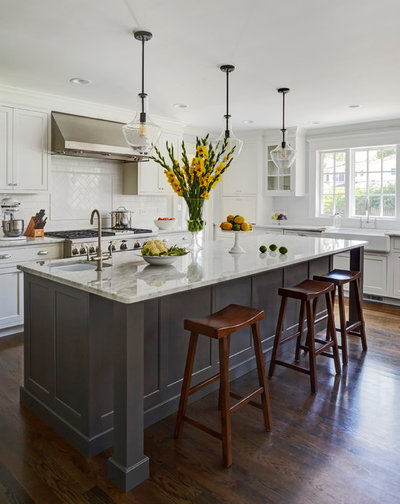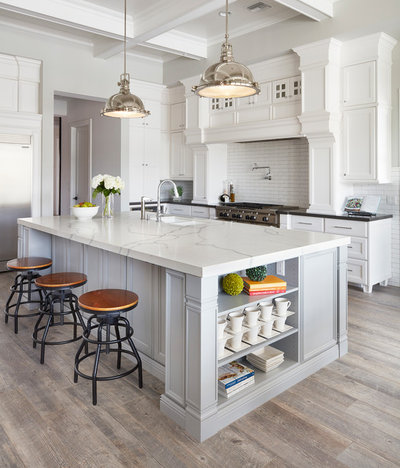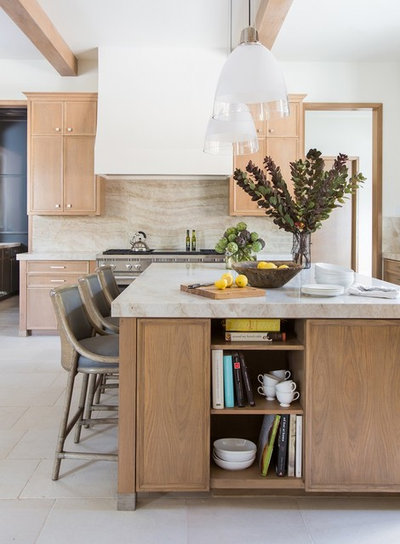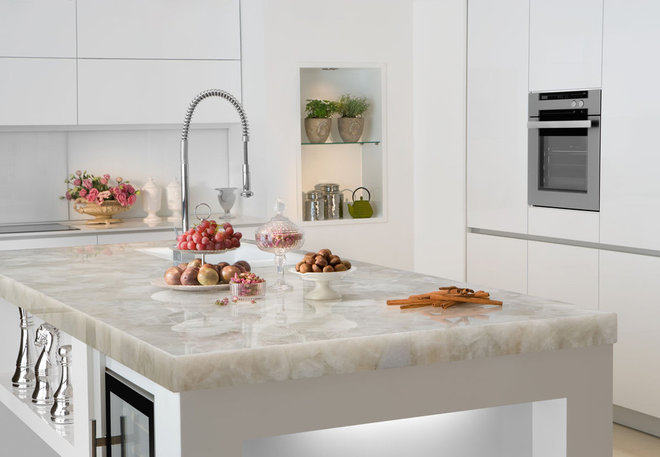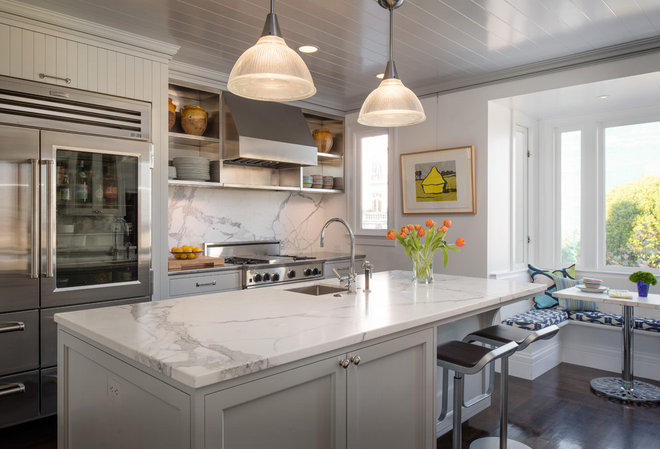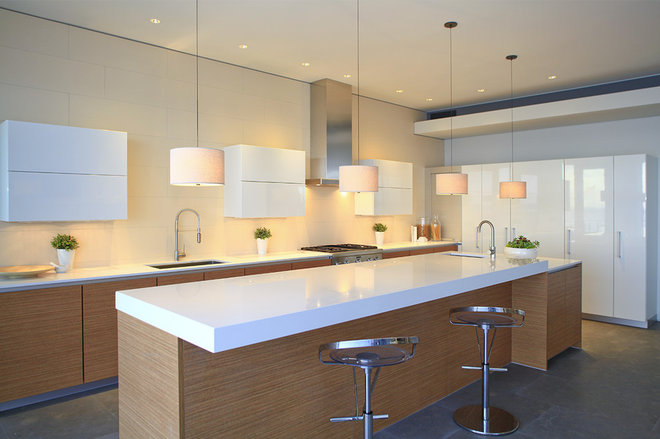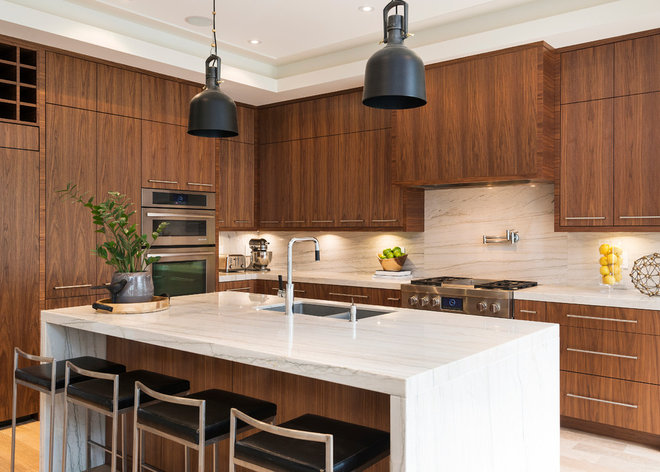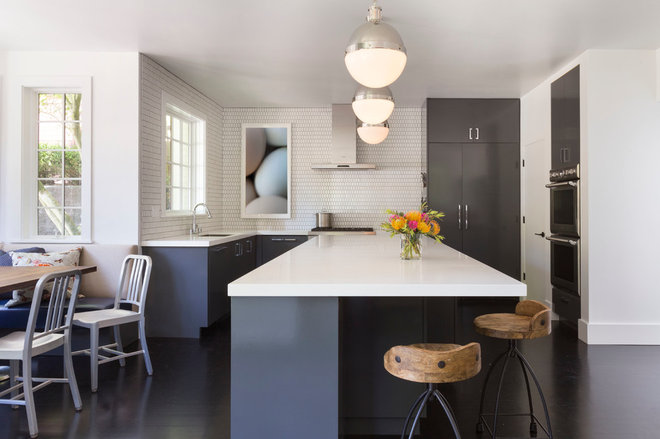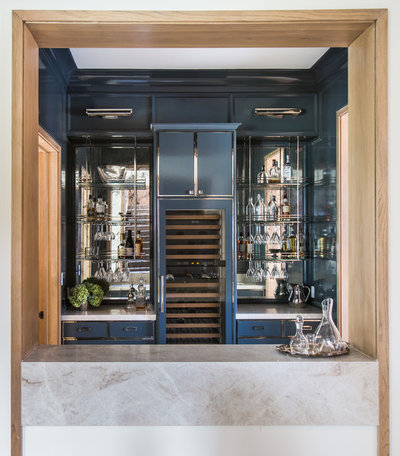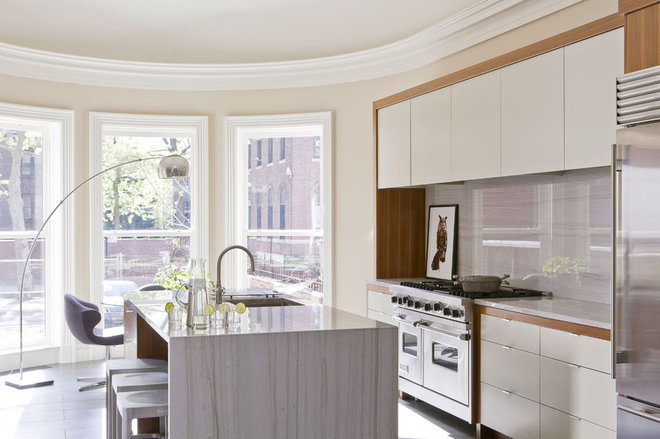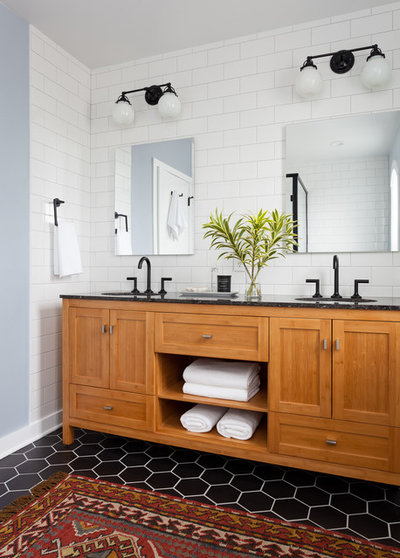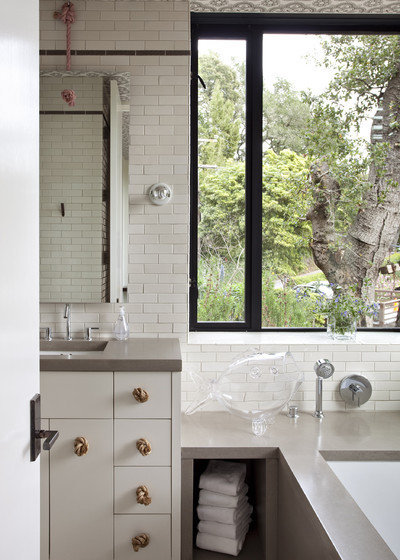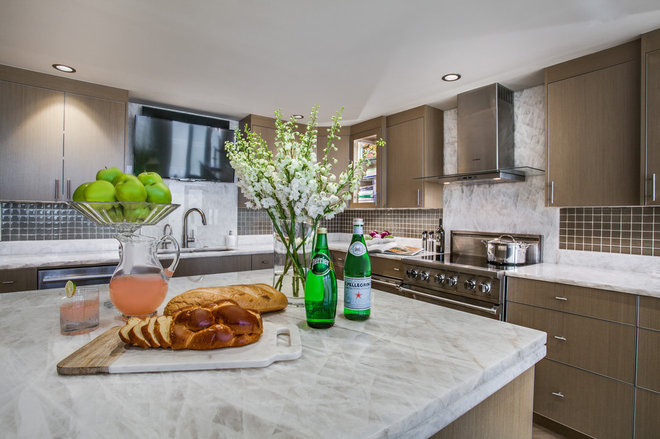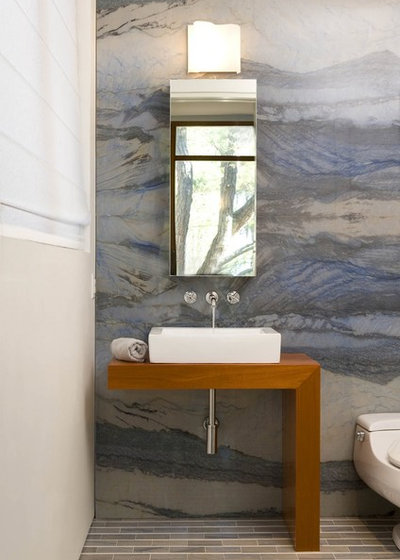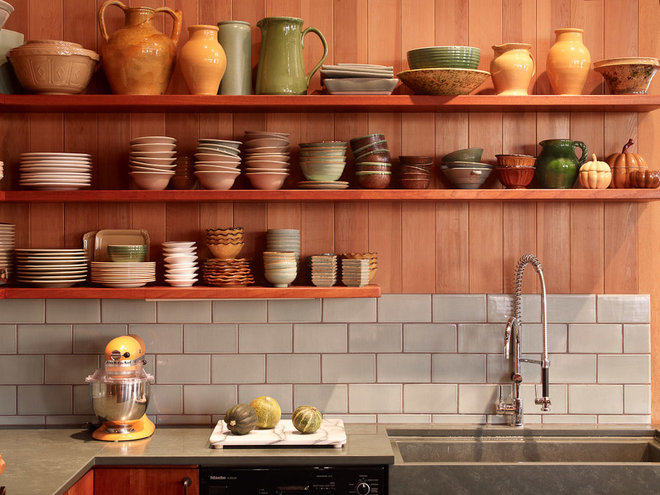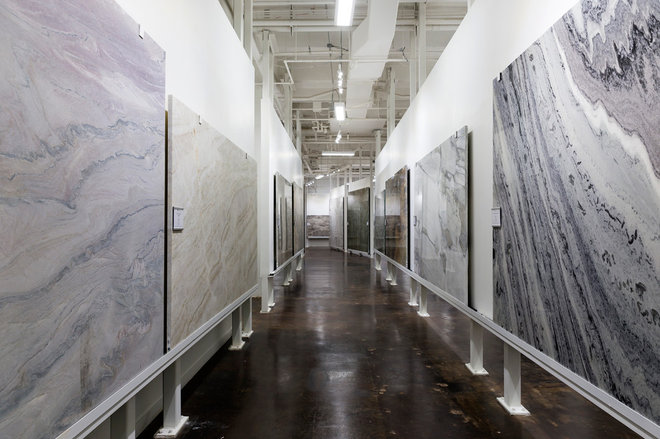The difference between the two translates to discrepancies in form and function. Quartzite and quartz both offer durability. In fact, each outperforms granite in terms of hardness. However, you will definitely want to consider the factors that follow before you decide on your new kitchen or bathroom countertops. (Can you guess which material our firm selected for this kitchen? Hint: Our client wanted to go au naturale.)
Because quartzite comes directly from Mother Nature, it displays infinite variation in color and pattern, meaning no two slabs are exactly the same.
Conversely, bold markings like veins can be removed entirely from quartz, and the end result is a more consistent and uniform appearance.
In addition to hardness, most people are concerned with whether a stone will resist heat and staining over time, especially if you’re talking about an enthusiastic entertainer or a bustling family with young children.Quartzite wins in terms of heat resistance, making it a prime candidate for kitchens. (No worries if you happen to set that hot pan down for a moment on the counter next to your stove.)
Etching is not staining. It’s almost like an added layer of patina that shows up in high-traffic areas or under certain lighting. For example, etching can appear as discoloration that looks like dark water spots next to your sink even after the droplets have dried. Lucky for us, neither quartz nor quartzite are prone to etching, so both have become a popular choice for bathroom vanities. Judging by this gorgeous dark quartz countertop installation, it’s not hard to see why.
So, what do you think? Are you a fan of quartzite or quartz? Perhaps the examples that follow will sway you one way or the other. These specialty applications demonstrate that you can think outside the “countertop” box and use these versatile materials in lots of surprising ways. For instance, the entire wall in this stunning bathroom is covered with Blue Macaubas quartzite. Wow!
